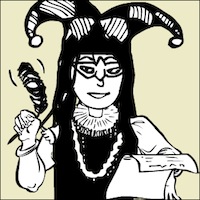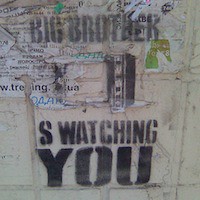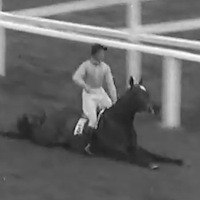Wedding Music Popularized

Ah, weddings! They’re so beautiful and so wonderful. When the bride plans her wedding, one of things thought about most is the music. By way of personal example, when I was engaged to my now-ex-fiancé, we were planning on using Pachelbel’s Canon in D as our wedding march and something sassy for the recessional — perhaps Queen’s “Another Bites the Dust.” I can’t remember. For the first dance, it was to be Apocolyptica’s cover of “Nothing Else Matters.” Alas, he was not worthy of me and we never had that come to fruition.
Instead, my current husband and I eloped to Las Vegas and had no say in the tape-recorded music they played for us. I did, however, get to choose my flowers and decidedly did not wear a white dress. But, that’s a story for the forums! The music that was played for us was none other than the Wagner piece, “Bridal March” from the opera Lohengrin. Words for this tune were sung by one of the characters in one of the great children’s books, Ramona Quimbly, Age 8: “Here comes the bride — fair, fat, and wide! Here comes the groom — skinny as a broom! Here comes the usher — the old toilet flusher!”
Tradition, of course, dictates that once you have been pronounced as husband and wife, you must run enthusiastically down the isle to a tune by Mendelssohn called “Wedding March” from his operatic version of Shakespeare’s play, A Midsummer-Night’s Dream. Tradition dictates the use of these two pieces of music. But, traditions have to start somewhere. Where did this one begin? And when?
January 25, 1858, is when. The occasion was the wedding of the Princess Royal, Victoria of England, to Crown Prince Friedrich Wilhelm of Prussia. Princess Victoria loved the Germanic composers and insisted on having those pieces for her wedding. Thus, the “tradition” was born.
Many people — women, especially — watch the royal families of many different countries for various reasons. These women have become trend-setters in their own rights. Jackie Kennedy, for example, defined class and beauty for American girls in the ’60s and ’70s. Princess Diana of Wales brought style to the royal family in the ’80s. These, obviously, are two more modern examples. Princess Victoria, daughter of Queen Victoria, was beloved by the people of England. Besides, what young girl has never dreamed of a “royal wedding”?
The use of Wagner and Mendelssohn for weddings started with a royal wedding — a “fairy tale” wedding. Weddings today are still about the bride and her dreams. Music brings those dreams into focus. Music breathes life into the dreams and allows them to float effortlessly on the clouds of air that surround a heady bride on her wedding day. The bold notes of the first chords of Wagner’s "Bridal March," alert the audience that the most beautiful woman is about to enter — looking like a princess. Likewise, the joyous cacophony of chords that start Mendelssohn’s "Wedding March," cause a smile on every face and a tear in the sentimental eye. And to think, it all began with Royal Wedding on January 25, 1858.
Instead, my current husband and I eloped to Las Vegas and had no say in the tape-recorded music they played for us. I did, however, get to choose my flowers and decidedly did not wear a white dress. But, that’s a story for the forums! The music that was played for us was none other than the Wagner piece, “Bridal March” from the opera Lohengrin. Words for this tune were sung by one of the characters in one of the great children’s books, Ramona Quimbly, Age 8: “Here comes the bride — fair, fat, and wide! Here comes the groom — skinny as a broom! Here comes the usher — the old toilet flusher!”
Tradition, of course, dictates that once you have been pronounced as husband and wife, you must run enthusiastically down the isle to a tune by Mendelssohn called “Wedding March” from his operatic version of Shakespeare’s play, A Midsummer-Night’s Dream. Tradition dictates the use of these two pieces of music. But, traditions have to start somewhere. Where did this one begin? And when?
January 25, 1858, is when. The occasion was the wedding of the Princess Royal, Victoria of England, to Crown Prince Friedrich Wilhelm of Prussia. Princess Victoria loved the Germanic composers and insisted on having those pieces for her wedding. Thus, the “tradition” was born.
Many people — women, especially — watch the royal families of many different countries for various reasons. These women have become trend-setters in their own rights. Jackie Kennedy, for example, defined class and beauty for American girls in the ’60s and ’70s. Princess Diana of Wales brought style to the royal family in the ’80s. These, obviously, are two more modern examples. Princess Victoria, daughter of Queen Victoria, was beloved by the people of England. Besides, what young girl has never dreamed of a “royal wedding”?
The use of Wagner and Mendelssohn for weddings started with a royal wedding — a “fairy tale” wedding. Weddings today are still about the bride and her dreams. Music brings those dreams into focus. Music breathes life into the dreams and allows them to float effortlessly on the clouds of air that surround a heady bride on her wedding day. The bold notes of the first chords of Wagner’s "Bridal March," alert the audience that the most beautiful woman is about to enter — looking like a princess. Likewise, the joyous cacophony of chords that start Mendelssohn’s "Wedding March," cause a smile on every face and a tear in the sentimental eye. And to think, it all began with Royal Wedding on January 25, 1858.

Related Articles
Editor's Picks Articles
Top Ten Articles
Previous Features
Site Map
Content copyright © 2023 by Christa Mackey. All rights reserved.
This content was written by Christa Mackey. If you wish to use this content in any manner, you need written permission. Contact Lane Graciano for details.







